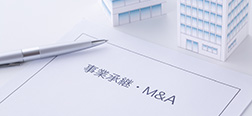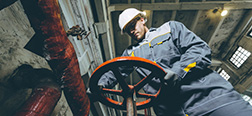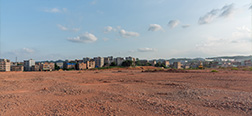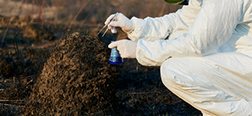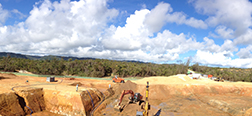Soil Investigation and Countermeasures
EnBio quantifies the risk of soil and groundwater contamination and takes countermeasures in a wide range of countries and regions. Phase 1 (material survey / geological history survey), Phase 2 (soil groundwater sampling survey) and Phase 3 (countermeasure construction) will be implemented based on local laws and regulations.
EnBio also has a wealth of experience in overseas sites, such as soil investigations that involve sampling triggered by environmental due diligence, and consulting methods designed for countermeasures against soil that has been confirmed to be contaminated. Especially in China, our staff can handle administrative consultation support after countermeasure construction.

Risks to be especially careful of on overseas sites
For Japanese companies with overseas locations, when it is necessary to deal with soil and groundwater pollution, the following points should be noted.
Each country will be home to substances to be investigated that are not subject to regulation in Japan. There may also be opportunities for investigation that are different from those available in Japan. Before conducting a soil investigation, it is necessary to confirm a plan’s legal compliance.
There are existing environmental laws and regulations, but they are not functioning. There are no laws or regulations, but there are widely used guidelines. There are cases where there is a large gap between the law and everyday operations.
Even without existing soil environment standards, you may be held retroactively responsible as a former owner after new legislation is enacted.
Foreign-affiliated companies are often targeted for scrutiny, requiring excessive soil investigations and countermeasures that go beyond the standards of preventing health hazards and the spread of soil contamination.
At overseas sites, in order to avoid retroactive responsibility concerns, there are cases where soil contamination investigations and countermeasures are voluntarily conducted, even if these are not mandated under local regulations. When a soil contamination investigation becomes necessary due to the relocation or withdrawal of an overseas location, it is important to take measures while also being aware of risks that might not be much cause for concern in Japan.
Soil investigation of overseas land
First, a materials-based survey (Phase 1), followed an investigation involving soil sampling and analysis (Phase 2) is conducted. Then, if necessary, countermeasure construction (Phase 3) begins. This is the major workflow common to all countries and regions. However, special attention should be paid to excesses or deficiencies in soil investigations (sampling points, depths, target substances, etc).
After conducting a soil investigation, the government may point out the numbers and depths of survey points. In addition, there are cases where it is necessary to detect and deal with naturally occurring contamination by conducting an investigation without scrutinising the substance to be surveyed.
It is important to prepare thoroughly in advance, to investigate the general situation and then to create appropriate investigation specifications.
In addition, if there is a possibility of a future soil contamination investigation, it may take longer to prepare than it would in Japan, so it is necessary to take measures allowing plenty of time for completion.

Preparation
Gathering information about the laws and regulations of the country or region where the survey site is located, understand the general idea of the information and prerequisites required for the survey.
- Status of environmental laws
- Substances to be investigated
- Existence of industrial facilities that have been notified by the government regarding areas of concern
- Matters that require an administrative report when the factory withdraws or ceases from operations
Document research and field survey
Organising information on past land uses and substances used to determine whether there is a risk of soil contamination
- Regulations in the EU related to contaminated areas (IED), restrictions by the database in France (BASOL / BASIAS), etc.
- Restrictions due to the use of surrounding land (agriculture / housing / industry), etc.
- Restrictions due to land transactions related regulations, such as the notary system

Common soil and groundwater contamination risks faced by companies
If soil and groundwater contamination occur and the intake route to humans is not properly managed, it may cause health hazards to employees and neighbouring residents.
In lands where soil pollution has been confirmed, it is necessary to manage the damage so that it does not spread, It costs a lot of money to remove the pollution source, so the asset’s value decreases.
Even if measures are taken to prevent health hazards and the spread of pollution, if a company is recognised as being the cause of the soil’s contamination, it may develop a negative image.
Soil and groundwater environmental support in China
Soil environmental legislation has been put in place in China that has rapidly become stricter in recent years. However, there are only a limited number of research companies that have specialists accustomed to dealing with these soil issues, and foreign-affiliated companies need to be treated with particular care.
EnBio has a wholly owned subsidiary in Nanjing that can provide one-stop support for soil pollution in Japanese.
In China, there are four triggers for soil contamination surveys that companies are required by law to address.
- When designated as a soil contamination priority monitoring and management company*
- When a sudden accident occurs and soil contamination may occur
- When a construction site that is judged to have a risk of soil contamination by general surveys is developed as public land
- When changing the use of factory land that is suspected of soil contamination, or returning the land use rights due to factory relocation, etc.
Process based on guidelines for soil contamination investigation
When an investigation is required, it will proceed based on the process of creating and implementing a survey and restoration plan based on the guidelines for soil contamination investigation and the examination approval by expert examination committee.

The expert examination committee is a meeting in which academic experts review and approve the results of soil contamination surveys, restoration plans and the validity of the results. It is the most important process in soil contamination investigations and restorations in China.
The ecological environment department will host the survey and restoration at the time of a factory’s relocation, but the factory must ask an expert to host the investigation of the priority monitoring and management companies. Companies participate as investigators (pollution managers and land use rights holders) and contractors who undertake legal investigations and restorations to report their results in a neutral position in this situation.
EnBio has a proven track record in multiple regions, including Jiangsu, Hebei and Tianjin, and can respond to committees throughout China.

Q&A
Q&A (general)
- Since no harmful substances are used, are there any problems related to the investigation of administrative instructions?
- Hazardous substances that can be investigated can include those that are abundant in nature (arsenic, fluorine, etc.). If you find contamination through excessive investigation, it is possible that the contamination may come from the business of the factory, so it is important to investigate using appropriate specifications.
- Is it not possible to leave it to the local corporation?
- In many cases, the government has pointed out additional soil investigations after several years from submitting the first report. To prepare against such risks, it is recommended that multiple staff members understand the background and precautions regarding the investigation and take appropriate measures to address them.
Q&A (China)
- What kinds of factories need to be investigated when relocating?
- If the land is recognised by the local ecological environment department as ‘a site that is suspected of being soil-contaminated by a soil pollution priority monitoring and management company, or a factory that uses toxic and harmful substances’, an investigation is required.
- When should I start the soil survey once a factory is relocated?
- The survey will begin after the Notice of Soil Environment Elementary Survey Implementation Instruction is issued to the land use rights holder by the local ecological environment department.
- What are the evaluation criteria for soil and groundwater?
- There are Soil Environmental Quality, Soil Contamination Risk Control Standards (Trial) (GB36600-2018) and Groundwater Quality Standards (GB / T-14848-2017) for construction sites, soil groundwater investigations and countermeasures in line with local standards.
- Is repair always necessary when contamination is confirmed?
-
If the risk assessment selection value* is exceeded, it is recognised as ‘contaminated’, but the contamination that needs to be repaired is that in which the concentration of the target substance exceeds the permissible range of human health risks. Risk control can be pursued if the contamination is within the acceptable range of human health risks.
*Construction site soil contamination risk assessment selection value. If this value is exceeded, we recognise that there is a potential health risk to the human body, and we will continue to conduct a detailed investigation and risk assessment to determine the extent of the contamination and its risk level. If it is below this value, the health risk to humans can be ignored, and it can be said that there is no pollution

